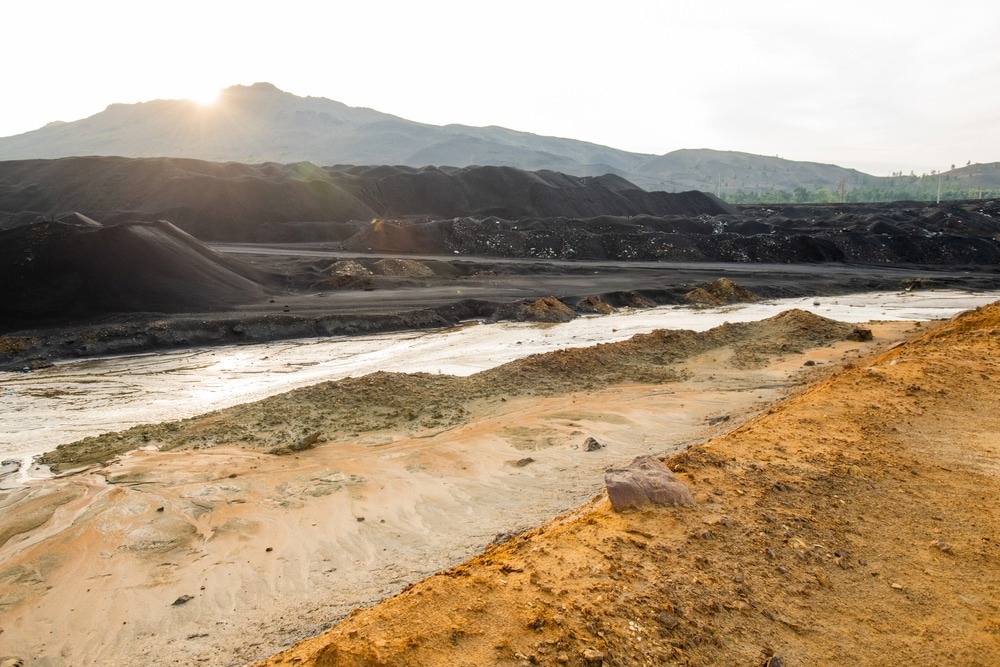In a recent article published in the journal Water, researchers from China presented a novel grouting technique to prevent water-sand mixture inrushes in mining operations, particularly within the Wugou coal mine. The study addressed the safety risks posed by water-conductive fracture zones in the geological structure, which can lead to hazardous inrush events during underground mining activities.

Image Credit: Pressmaster/Shutterstock.com
Background
The coal mining industry is essential for fulfilling the world's energy requirements, yet it is fraught with various geological hazards that can compromise safety and operational efficiency. One of the most significant risks associated with coal mining is the occurrence of water-sand mixture inrushes. These events can lead to sudden and uncontrolled inflows of water and sand into mining areas, posing serious threats to the safety of workers, damaging equipment, and resulting in substantial financial losses. Understanding the hydrogeological conditions contributing to these inrushes is crucial for developing effective risk management strategies.
The Current Study
A detailed geological survey of the Wugou coal mine was conducted to understand the area's hydrogeological conditions and structural characteristics. This involved mapping the distribution of coal seams, aquifers, and weathered zones, focusing on the No. 4 aquifer and its interaction with the surrounding geological formations. The assessment included measuring parameters such as aquifer thickness, porosity, permeability, and water saturation levels.
Following the geological assessment, laboratory experiments were performed to simulate the grouting process and its effects on the mechanical properties of the geological materials. The No. 4 aquifer and weathered zone samples were collected and subjected to various tests, including unconfined compressive strength (UCS), permeability, and consolidation tests.
The grouting mixture, composed of silicate cement and fly ash, was prepared in specific proportions to optimize its performance. The samples were then grouted under controlled conditions, allowing researchers to study their effectiveness in reducing water content.
Numerical simulations were conducted using the 3DEC (Three-Dimensional Distinct Element Code) software to complement the laboratory findings. The models incorporated grouted and ungrouted scenarios, allowing for a comparative analysis of stress distribution, displacement, and crack propagation during mining operations.
The grouting technique's practical application involved strategically placing grouting boreholes within the No. 4 aquifer and the weathering zone. The effectiveness of the grouting was monitored through a series of detection drill holes, which provided real-time data on changes in hydrogeological parameters and the mechanical strength of the treated zones.
Results and Discussion
Post-grouting assessments revealed a marked reduction in the water content of the No. 4 aquifer and the weathered zone. Measurements indicated that the water saturation levels dropped significantly and that the grouting effectively sealed the pore spaces within the aquifer, reducing its capacity to transmit water and mitigating the risk of water-sand inrushes.
Additionally, the mobility of sand within the treated zones was considerably diminished. Laboratory tests confirmed that the grouting process led to the consolidation of sand particles, resulting in a more stable geological structure. This transformation is crucial for preventing the migration of water and sand during mining operations, which can lead to hazardous inrush events.
Laboratory tests, including unconfined compressive strength (UCS) assessments, indicated that the strength of the grouted samples increased substantially compared to ungrouted controls. The UCS values for the grouted No. 4 aquifer samples showed an increase of approximately 30%, indicating enhanced structural integrity.
Moreover, the permeability tests demonstrated a reduction in the hydraulic conductivity of the grouted materials, confirming that the grouting mixture effectively filled voids and fractures within the geological matrix. The numerical simulations using the 3DEC software indicated that the grouted model exhibited a more stable stress distribution than the ungrouted model. Specifically, the grouted areas showed a reduction in the magnitude of stress concentrations, often precursors to structural failure.
Significant displacement changes were observed in the ungrouted model, particularly in the areas adjacent to the mining face. The simulations revealed that the ungrouted sections experienced larger displacements and a greater extent of damage to the overburden, leading to the development of caving zones and water-conductive fracture zones. In contrast, the grouted model demonstrated a more controlled displacement pattern, with the caving zone height and extent of water-conductive fractures significantly reduced.
Conclusion
The research concludes that the innovative grouting technique offers a viable solution to the challenges posed by water-sand mixture inrushes in mining environments. Successfully transforming the geological structure through grouting enhances safety and supports the efficient extraction of resources. The study emphasizes the importance of implementing such advanced techniques in future mining projects to ensure operational stability and safety.
Source:
Hu R., Sui W., et al. (2024). A New Technique of Grouting to Prevent Water–Sand Mixture Inrush inside the Mine Panel—A Case Study. Water 16(15):2071. DOI: 10.3390/w16152071, https://www.mdpi.com/2073-4441/16/15/2071